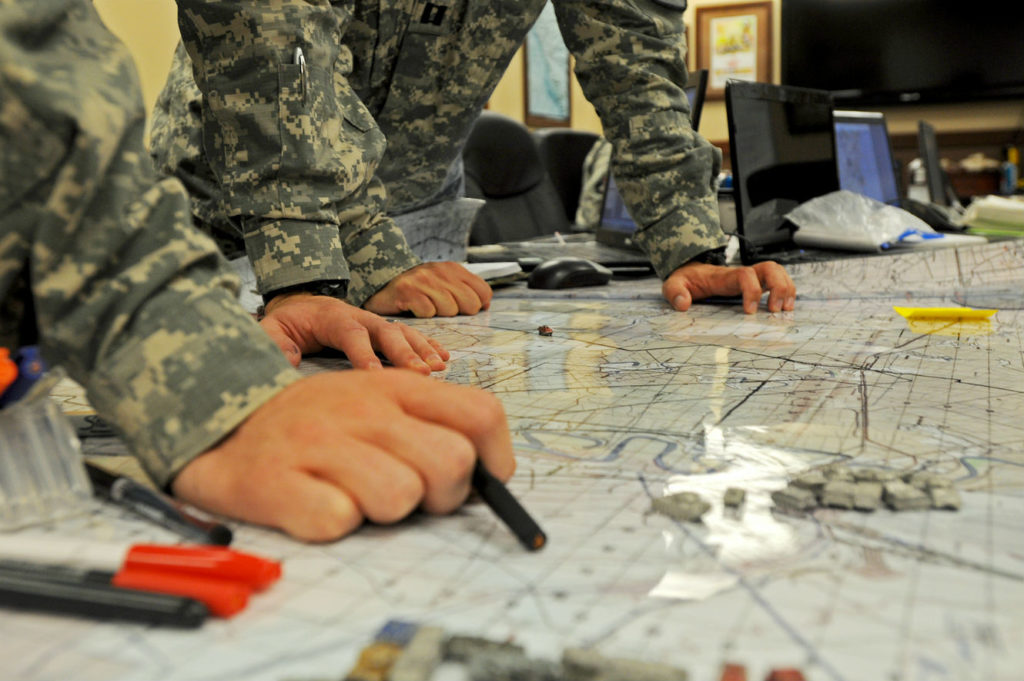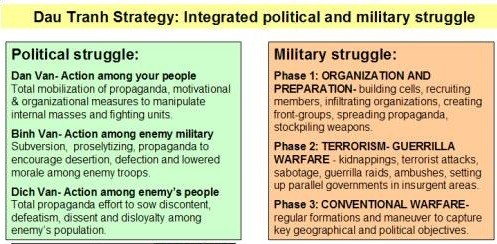On Campaign Plan Phasing: Six-Phase or Unconstrained?

In any problem where an opposing force exists and cannot be regulated, one must foresee and provide for alternative courses. Adaptability is the law which governs survival in war as in life … To be practical, any plan must take account of the enemy’s power to frustrate it; the best chance of overcoming such obstruction is to have a plan that can be easily varied to fit the circumstances met.
-Sir Basil H. Liddel-Hart (Strategy, 1954 )
Lauren Fish’s excellent article on the joint phasing construct illustrates the two challenges we have with planning.
On the one hand, we have the science of war that is mainly the concern of “force providers,” the services and joint staff responsible for allocating forces, getting those forces to the theater of operations, and then resupplying them (the major functions of Transportation Command). This is why planners used to say that “the TPFDD [Time Phased Force Deployment Data] is the plan.” The TPFDD drove operations. How and in what order forces arrived in theater drove the plan, though the order of arrival of forces is theoretically based on the theater commander’s requirements. This was the essence of numbered war plans prior to 9/11.
On the other hand, we have actual warfighting. While science plays an enormous role in warfighting because firepower, mass, correlation of forces are so important, the plan must incorporate the art of war to ultimately succeed. In the 1990’s, theater commanders designed the war plans for warfighting and gave requirements for forces to the force provider for resourcing without regard to the four phase construct that Fish shows. That construct was merely illustrative. Some plans had five phases, some had seven, and some even had sub-phases (e.g., phase IIA, phase IIB). Theater commanders and planners enjoyed the latitude to develop a phasing construct that suited the conditions and threats the theater faced. Yes, Fish is correct in that that a common assumption was that an enemy would attack or invade the territory of a friend, partner, or ally and the United States would have to intervene. Still, the plans were not necessarily the “paint by numbers” construct that became the norm with the six-phase template of the post-9/11 world.
Why did we move from a varied phasing construct to the six-phase template? After 9/11, the war on terrorism competed for the many of the same resources as the major theater war plans. Secretary of Defense Donald Rumsfeld demanded a way to compare all war plans to ensure that they could be suitably resourced. If they could not be, planners were tasked with identifying risks as the war on terrorism was prosecuted. The simplest way to compare plans was to ensure they all had a standard phasing construct. While the four-phase construct that Fish described was clearly illustrative, it did not tie planners to those four phases. After 9/11, the new joint doctrine forced all planners to follow the same template regardless of the conditions, threats, and political objectives. This makes eminent sense from a resource allocation perspective, but actually hinders campaign planning and the stifles the intellectual rigor required for operational art and support to national strategy. Given the newly termed threats of the “gray zone” and other irregular threats, T.E. Lawrence’s admonition is apt: “Irregular warfare is far more intellectual than a bayonet charge.” How can we best apply creative thinking and the art of war in a 21st century environment characterized by ambiguous and irregular threats?
Fish is most correct in her conclusion:
The phasing construct was intended for a conventional campaign against an outmatched state actor with stronger U.S. forces, assured access and logistics, and little need for messy state-building after the conflict or extended competition beforehand. … But today, these assumptions are completely divorced from the reality of strategic competition or long guerrilla wars. Looking forward, the U.S. military should explore new paradigms for conflict and competition, which coming articles in this series will do [emphasis mine].
So what kind of phasing construct to do we need? Here is a thought experiment. Consider the following description from a previous article of mine of the Vietnamese strategy of Dau Tranh:
Douglas Pike, in his seminal work on the Vietnam War details the Vietnamese strategy of Dau Tranh (the “Struggle”) emphasizing that the strategy was beyond a purely military strategy but one which mobilized the entire population – a political struggle with the three now famous action programs (or “vans”): action among the enemy; action among the people, and action among the military. This was a comprehensive political-military strategy that had as a key element the psychological influence of its own people, its military, and that of the enemy. But the focus was not just on the enemy’s military force; it struck right at the heart of the enemy: the will of the enemy government leadership and its population.

Today’s geopolitical environment is no longer bi-polar, but can instead be described in terms of the following trinity:
- Revisionist powers who seek to disrupt and alter the international system to suit their strategic objectives.
- Revolutionary powers who seek to destroy the international system and replace it with one in which they can dominate.
- Status quo powers who seek to maintain the strength of the international system by respecting and protecting sovereignty and enforcing the rule of law.
Now the thought experiment.
Revisionist and revolutionary powers use their own versions of Dau Tranh. What kind of campaign plan can address both the three phases of the political struggle and the three phases of the military struggle?
First, use the current six-phase construct to develop a campaign plan to address the threat of a Dau Tranh-like strategy. Next, develop a campaign plan unrestricted by the phasing template and based on an understanding of the conditions, the threat, the enemy’s strategy, and our own political and strategic objectives. Compare the two. Which one is more likely to accomplish our national objectives and protect our interests? Which one will allow the flexibility to deal with changing assumptions and conditions and exploit opportunities? I would submit that the unanimous answer would be the plan unconstrained by a cookie-cutter paint-by-numbers template.
David S. Maxwell is the Associate Director of the Center for Security Studies in the Walsh School of Foreign Service at Georgetown University and is a retired U.S. Army Special Forces colonel. He thanks Dr. James Dubik (LTG, U.S. Army, ret.) at Georgetown University for helping formulate his thoughts on the trinity of the geopolitical environment described above.
Image: Spc. Paige Behringer, 1st BCT Public Affairs, 1st Cav. Div.

